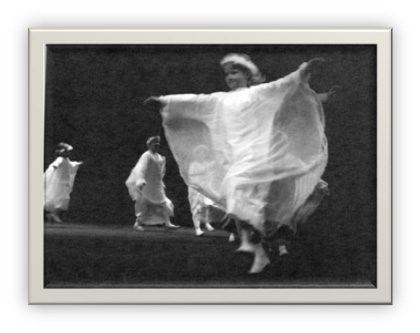Renown pioneers in the field of alternative healing therapies have successfully designed ways of focusing on colour healing techniques. The body’s chakra are associated with different colours.
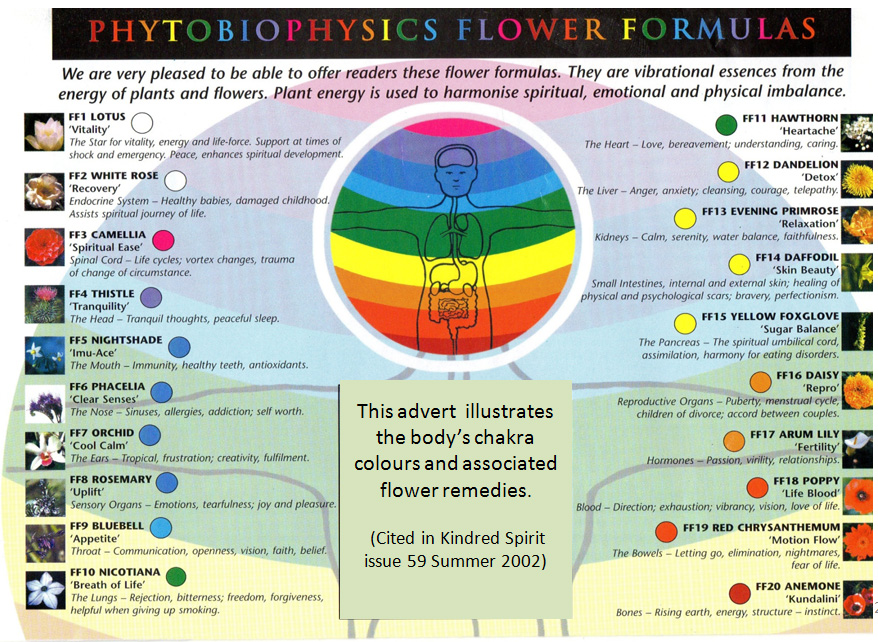
 Steiner presents that we receive the rich and varied world around us through colour. ‘We should entre the living world of nature and the experience of colour itself. ‘We must sink ourselves completely into what we receive through colour if we wish to penetrate into its true nature, bringing insight into our feelings.
Steiner presents that we receive the rich and varied world around us through colour. ‘We should entre the living world of nature and the experience of colour itself. ‘We must sink ourselves completely into what we receive through colour if we wish to penetrate into its true nature, bringing insight into our feelings.
Peter Mandel pioneered a therapy called Colourpuncture which combines the priciples of acupunture with the healing power of colour, using specified coloured torch light on acupuncture points. Colour Me Healing –Allanach,2002 cites the work of Mandel and describes the different colours used as follows:


The late Vicky Walls, due to blindness, was dependant upon her psychic perception of aura colours, (the energetic body which surrounds all living entities.). She developed over 100 different colour healing products all made from natural resources. Scientific research has indicated that the cells of the body naturally communicate through frequencies of light. Each colour carries a particular light frequency which the cells of the body can easily absorb and transmit to facilitate balance and health.
Aura Soma Equilibrium Balance Healing Oils

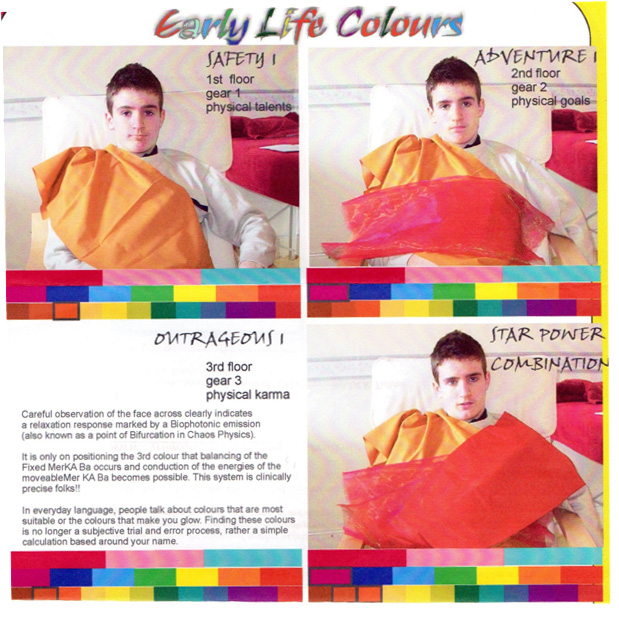 A person’s unique relationship with colour is illustrated within their choice of clothes, decorative surroundings and outdoor garden landscaping. It is not just design but also colour, that motivate us to be especially attracted or pleased with particular aesthetic experiences.
A person’s unique relationship with colour is illustrated within their choice of clothes, decorative surroundings and outdoor garden landscaping. It is not just design but also colour, that motivate us to be especially attracted or pleased with particular aesthetic experiences.
Ben Fisher has taken the ancient art of name numerology (where by letters are associated with specific numbers) and related the frequency of each letter to that of a corresponding colour. He then transcribes the person’s birth name into a colour chart that illustrates their own personal relationship with specific colours. Biochemistry presents that the DNA structure in the cells is able to receive coloured light and that the silicon structure of glass also has this light storage quality. Using name numerology data Ben constructs sun activated coloured glass bracelets uniquely tailored to each individual persons optimum relationship with colour empowerment and healing.
Ramtha (The beginners guide to Creating Reality 3rd Ed. Written by J Z Knight; JZK publishing,2004.)
Describes the different levels of human consciousness as different frequencies of light that can be seen as colours. This is described in his book as illustrated.


‘Feeling lies in the middle between thinking and willing, so that feeling connects with thinking in one direction and willing in the other.’ (Steiner, 1996:99)
‘….for the subjective human soul to be convinced of the correctness of a judgment, feeling must develop.’ (Steiner, 1996:101)
‘the real artistic value of poetry is not determined by verbal content’ so much as by the….. ‘musical element to be found in it.’…. ‘the artistic element, the rhythm, the metre and the inner form of the language used.’
‘if we dived down….into our ego, taking with us what as yet can only be dimly felt of the Spirit-Self poetry is born’ (Steiner,2006:29)
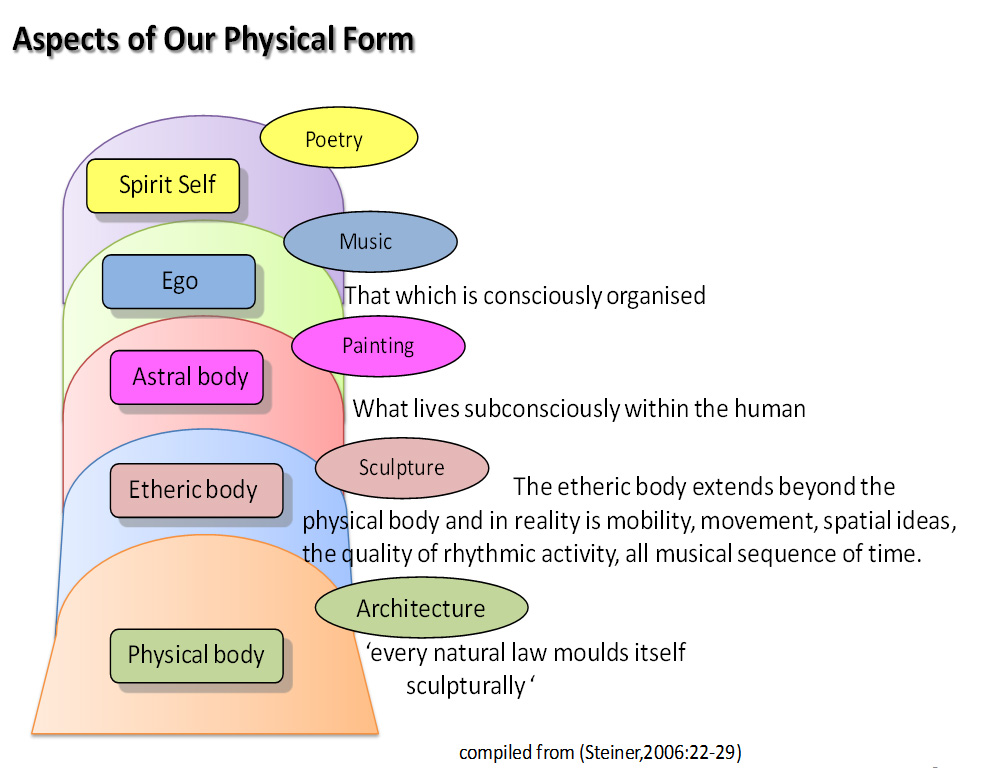
| Elements found within the young child’s intellectual development:- | Influences on the child’s creative activity:- |
| Accommodation and assimilation. | Access to and involvement with the environmental resources. |
| Cognitive and conceptual synthesis. | Willingness to openly engage with new experiences. |
| Originality of thought and/or action. | Previous experience and related skills. |
| Temperament and personality. | Social integration and authenticity. |

Artistic activity through which one’s own creating gains ‘an objective existence’ |
The creativity of colour:-
|
(Steiner,1996a: 181-183 &186) |
Like colour, musical tones – ‘the world of sound will enliven and deepen the life of soul’ the secrets of the individual tones, ‘ going through the tone of the soul’, which provides ‘a moral or spiritual quality’ of experience. (Steiner,1996a:87)
‘….when the soul element experiences colour it feels it of has come into movement.’ (Steiner,1996a:202)
When melody enters into language, the whole range of feeling will be introduced by the way the language is handled, not by an artificial infusion of emotion.’ (Steiner,2006:57)
|
Tone Eurythmy Expresses every ‘tone, musical phrase, melody, rhythm and harmony ’ (Steiner,2006:54) expressing music as movement in space’ ‘flowing wholly into the tone that is heard.’ (Steiner,2006:140) Accompanied by instrumental music it Illustrates the ‘faculties of movement inherent in the human organism’ as ‘visible song’ (Steiner,2006:53)
|
‘Speech eurythmy ‘an art that speaks in a form of movement’,‘…accompanied by recitation or declamation…the movement made by the human being becomes an expression of the speaking soul’.
a language that uses ‘the human being himself as an instrument’ that translates spoken sounds into ‘harmonious movement’. The vowels express feelings – ‘inner experiences of the soul’ … The consonants relate to our feelings and perceptions of outer events–‘outer happenings, outer existence.’ (Steiner,2006:52-55) |
The art of Eurythmy
‘……experiences mankind must have particularly through colour and sound but also through form; in fact altogether through the realm of art, in order to get away from the purely external relationships to things and their functioning’
| An artistic language ‘of movement in space’ (Steiner,2006:229) , which helps children express themselves through movement and thereby infuses ‘art into human culture’. (Steiner,2006:139)
|
The basic eurythmy movements are associated with colours corresponding to ‘the feeling inherent within’ the movement which also ‘comes to expression in the floating veil’ which ‘is how the movement is given character.’ (Steiner,2006:141-142) |
‘….then he (Steiner) spoke in a strong, ringing voice the first verse ever created for Eurythmy.
He asked the three oldest people present to form a small circle and directed their steps
| He who illuminates the clouds,May he illuminate,
May he irradiate, May he inspire, And fill with the warmth and light Even me. |
They repeated the sequence of movements several times.’ (Steiner,2006:60) |
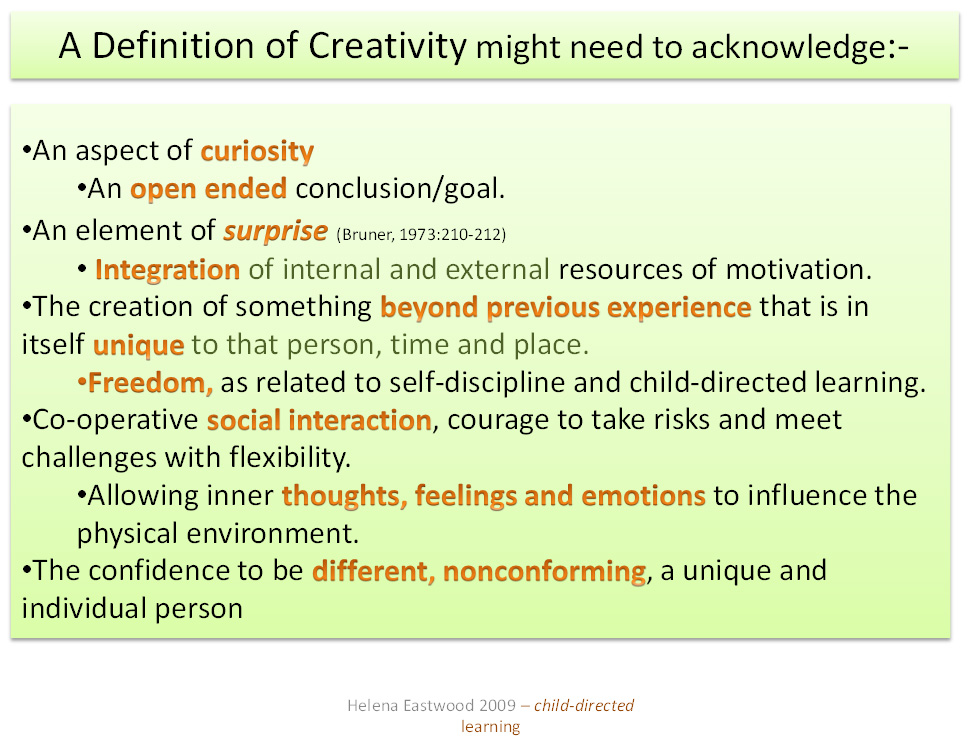
If creativity is something more than imitation, or apprenticeship to the mastery of skills…
How can the adult successfully balance what may appear to be opposing issues such as:- guidance -v- influence,
| Holding responsibility for the welfare of the children and the care of the environment | -v- | Mutual respect as equals. |
| Equality in learning | -v- | apprenticeship to someone with superior knowledge and skills. |
| Teaching without issues of control, agenda or judgment of results | -v- | a presentation of truthful information and opinion. |
| Non-interference | -v- | shared learning and genuine interchange of ideas. |
| Scaffolding | -v- | teaching and taught. |
| Freedom in actions and thought
– child-directed learning |
-v- | adult organization of interesting & enriching classroom activities. |
When structural elements and musical elements unite they create a sense of integration and harmony, e.g. poetry, imagination, problem solving, eurythmy.
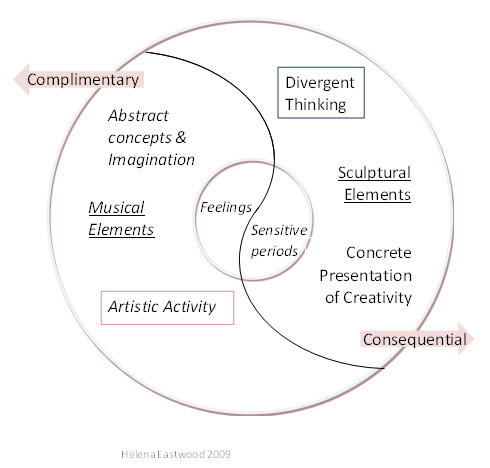 This diagramme illustrates Creativity as a union of environmental activity with feelings. Uniting fantasy with reality and facilitating the embodiment of joy described as enjoyment
This diagramme illustrates Creativity as a union of environmental activity with feelings. Uniting fantasy with reality and facilitating the embodiment of joy described as enjoyment


 He walking went sad he on road with falling.
He walking went sad he on road with falling.
He was sad when he went for a walk down the road.
A walking went he,
Down the falling road of sadness.
He is being grumpy
Look the leaves are dancing.
The butterfly is fly’s anywhere.
Creativity is like the wind:
The affects can be seen and felt.
It can be channelled to create a physical influence,
e.g. the flying kite or the wind turbine.
Yet, in itself it remains an indefinable representation of creative freedom.
The art of teaching is as colourful and as unique as each individual adult and child, and the moment by moment unfolding of each new opportunity.
The best teaching practice may need to include an ability to spot ‘the emergent beginnings’ of creativity (Bruce,2004:135) within play and learning and respond creatively with uniquely appropriate support and encouragement.
If creativity is an open ended exploration that invites us to move on – expand into new perspectives and boldly embrace new opportunities, any conclusion would be detrimental to the very nature of the subject ‘CREATIVITY’
So Be It


